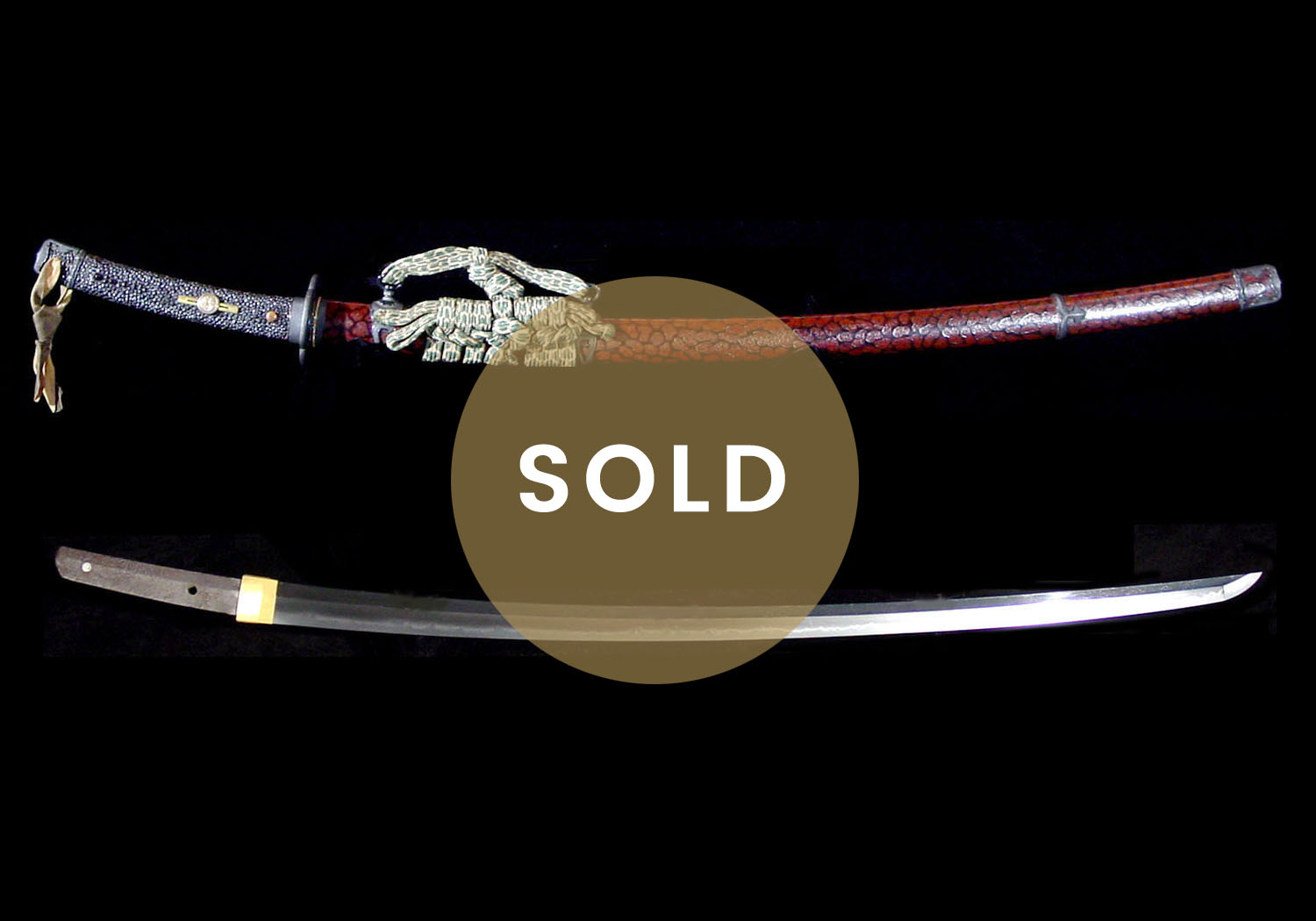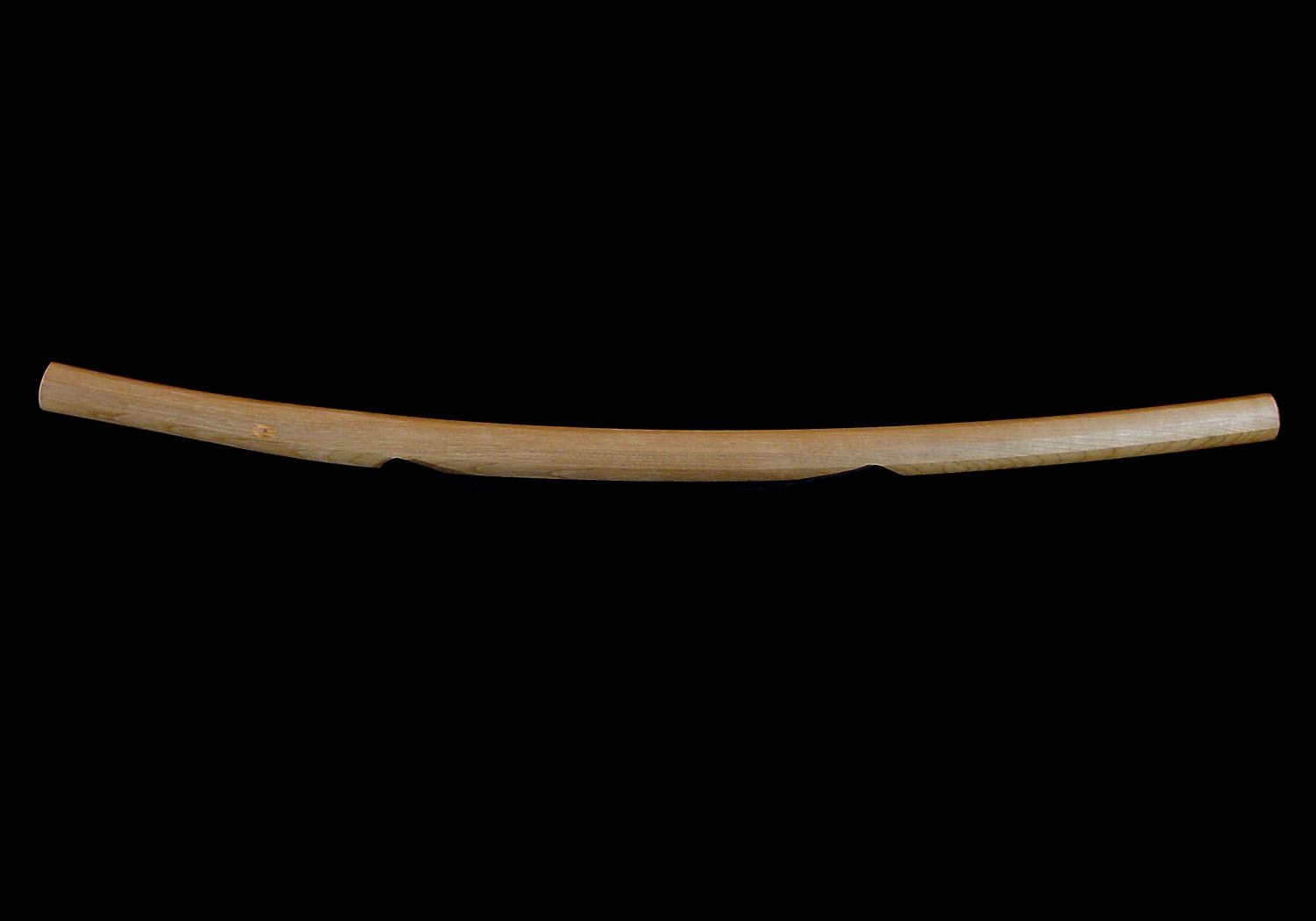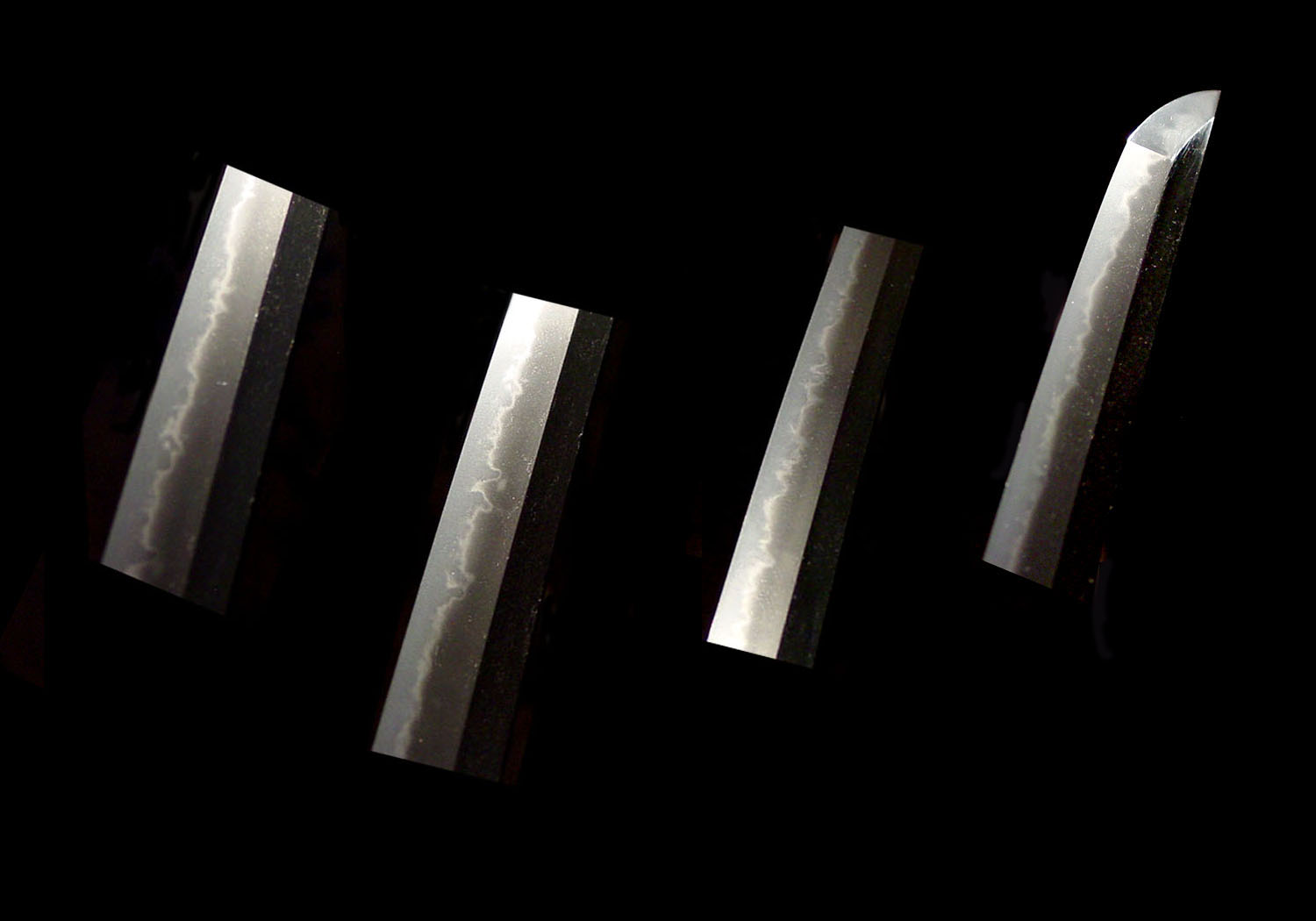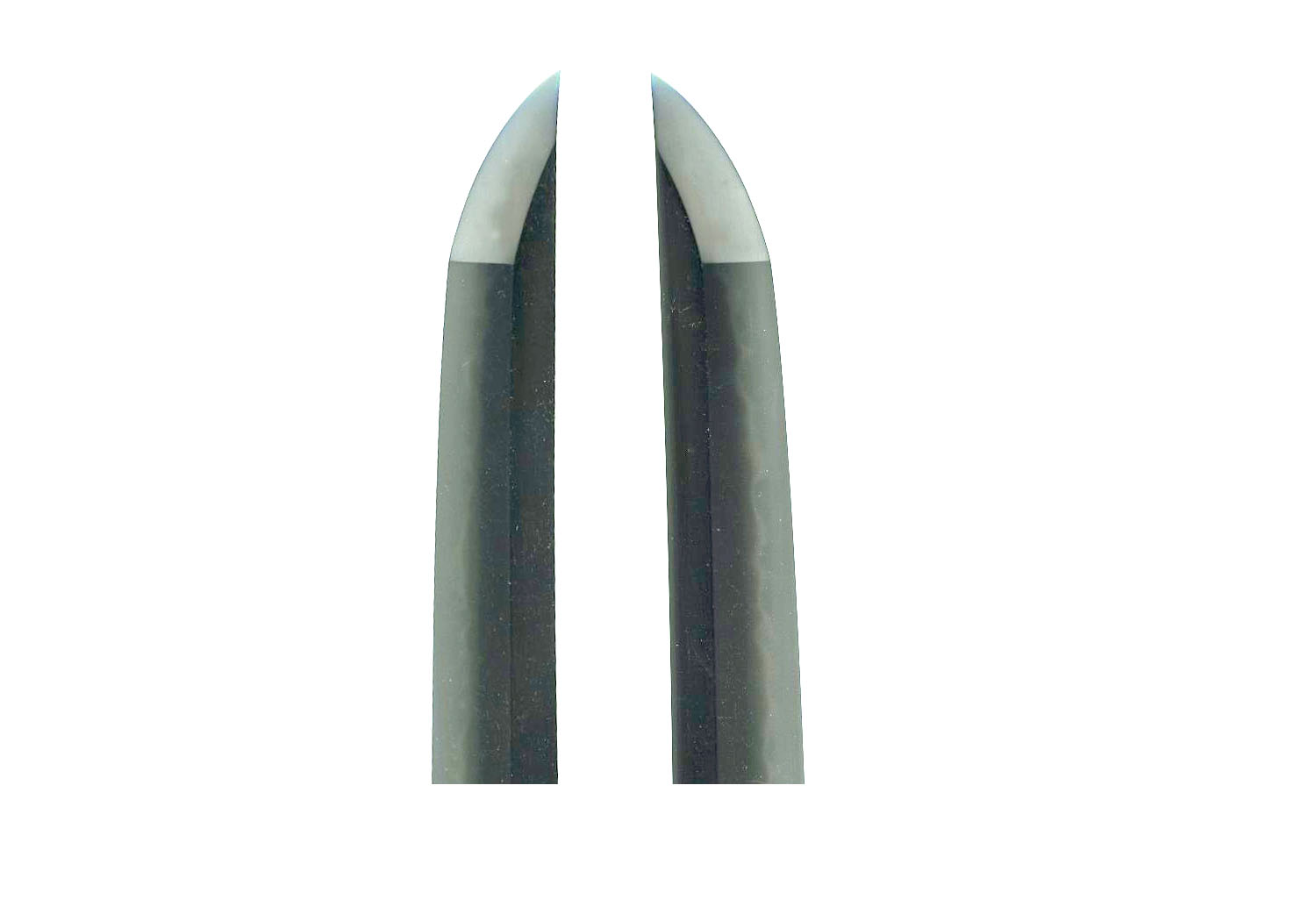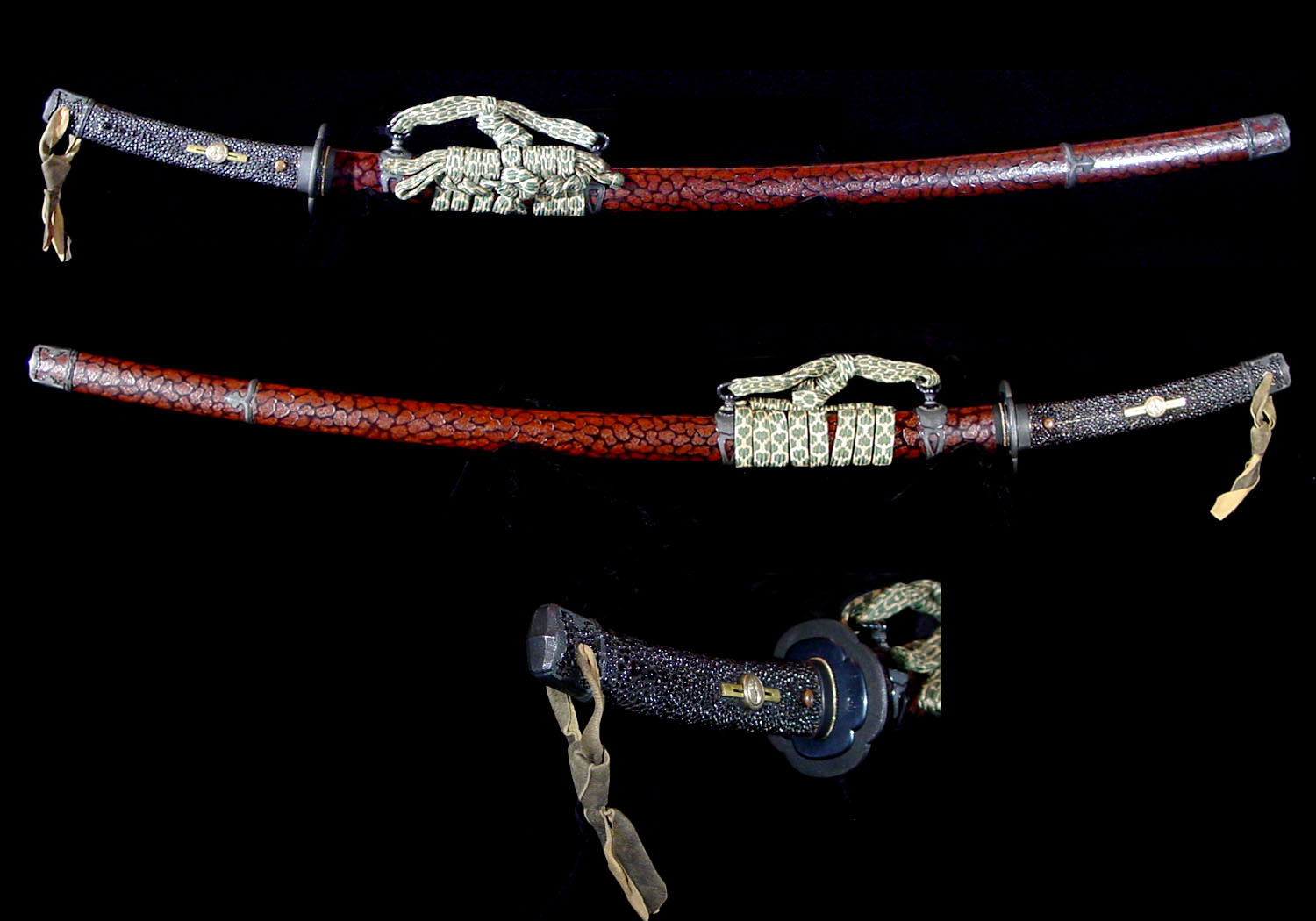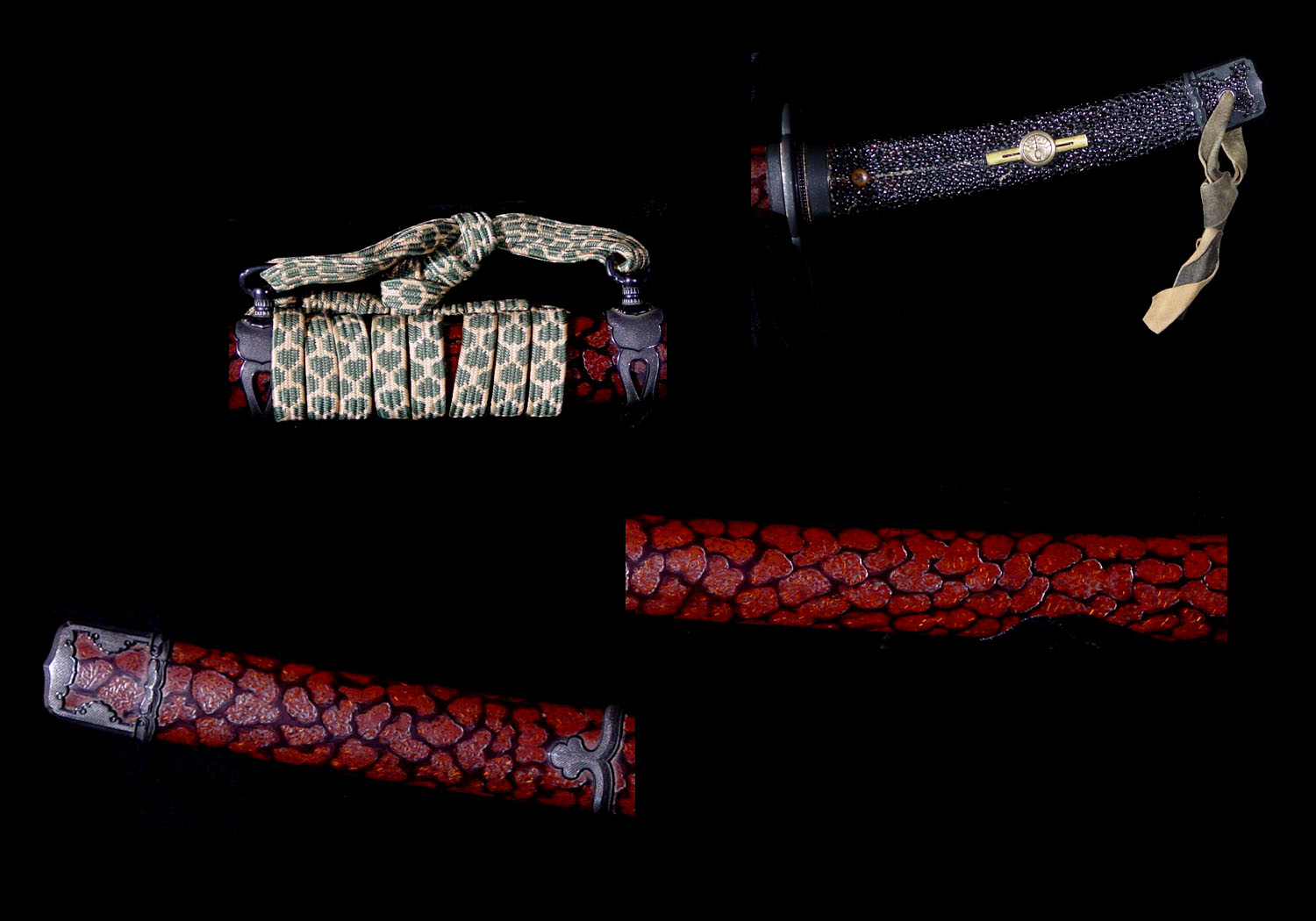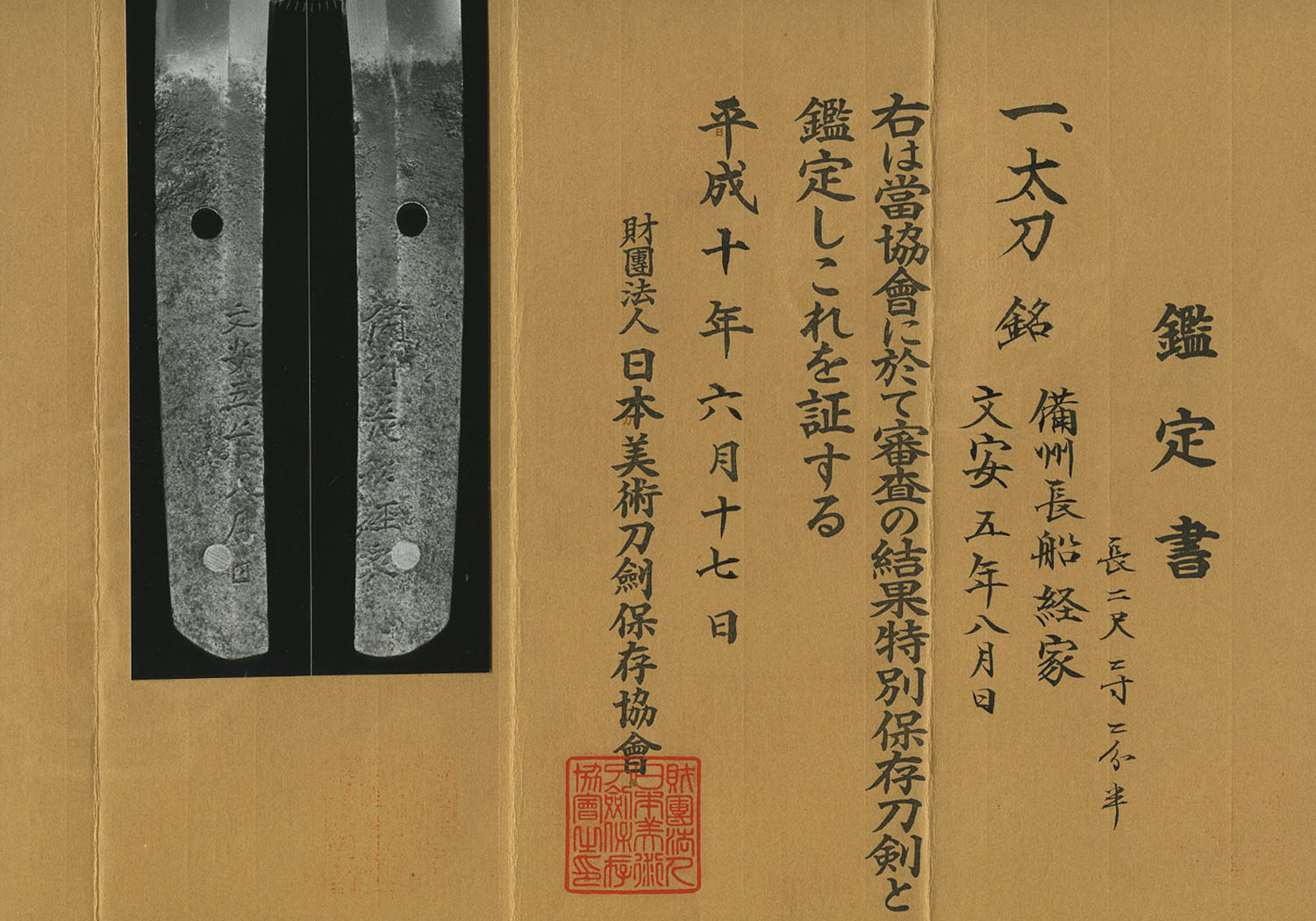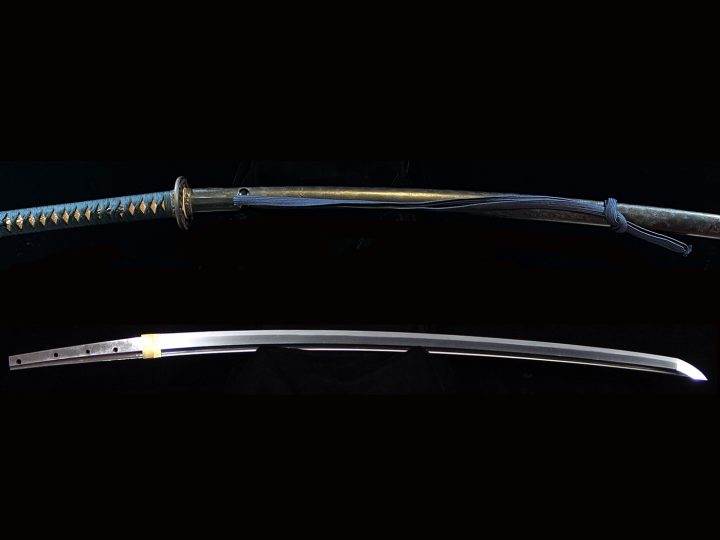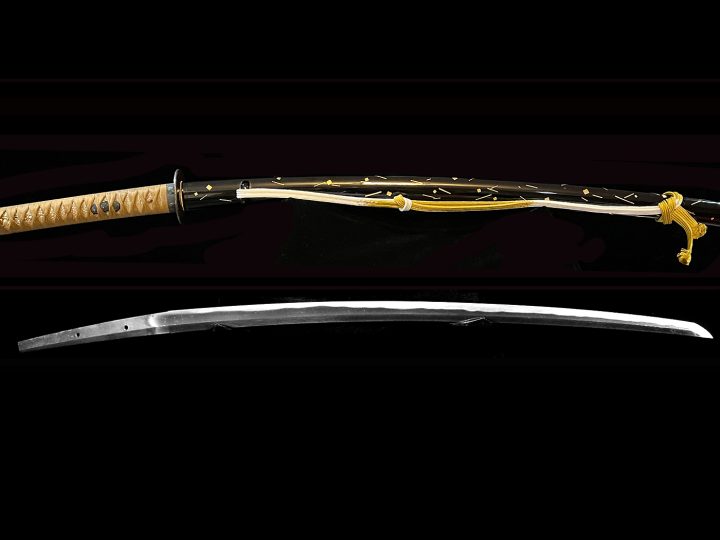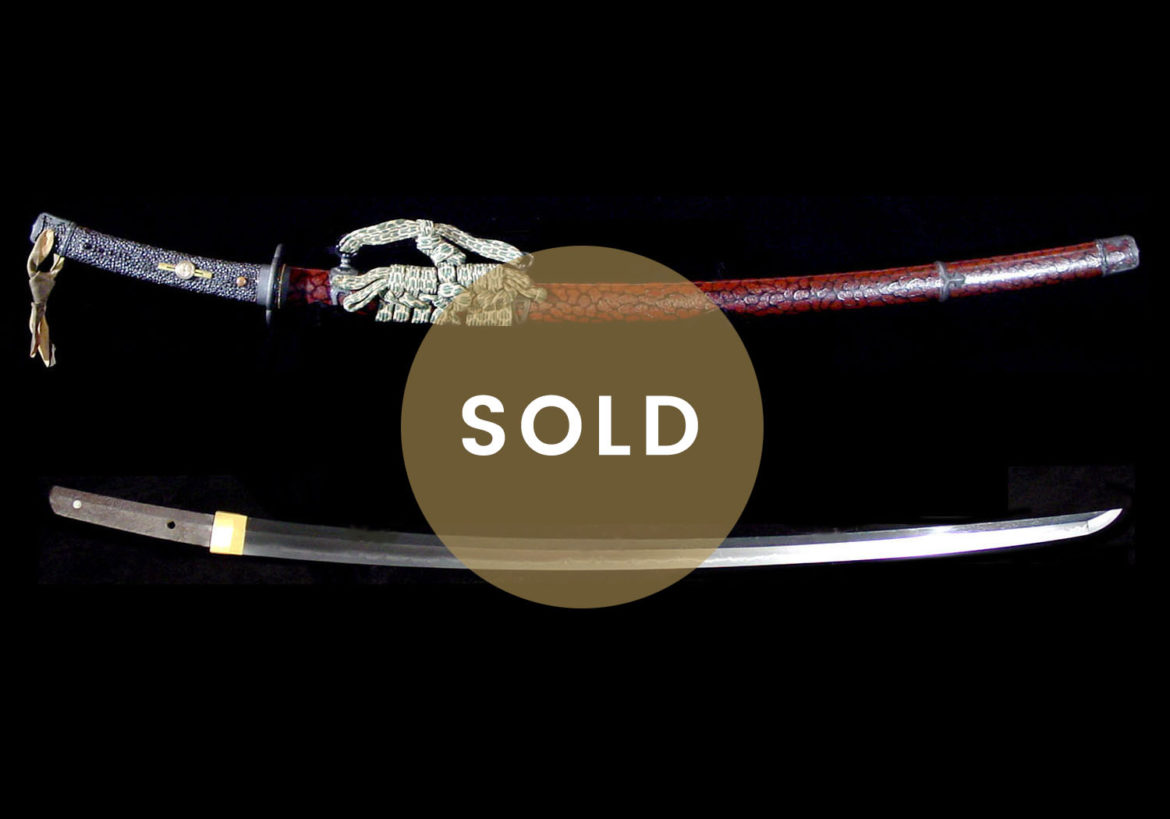
At the beginning of the Muromachi (室町) era around the Oei (応永) era (1394) most of the different schools in the Bizen (備前) province were virtually absorbed by the Osafune (長船) School. The Osafune (長船) School had long been the main school in Bizen (備前)province. The various schools gradually lost any distinctive characteristic features they may have had, and began to display the characteristic features of Bizen (備前) workmanship of this period. Oei-Bizen (応永備前) is the general term for the Osafune smiths who worked in the Oei (応永) era (1394-1428). The most famous smiths of this period were Yasumitsu (康光), Morimitsu (盛光),and Moromitsu (師光). They were collectively known as the Oei no San Mitsu (応永の三光) (three mitsu of the Oei era).
Generally speaking, smiths who came later in the Muromachi (室町) era were said to belong to the Sue Bizen (末備前)School. These smiths worked throughout the later part of the Muromachi (室町) era and into the Sengoku Jidai (戰国時代) (1490-1600). There were smiths, however, who were active between the years of 1429 and 1465 that cannot readily be classed into either the Oei-Bizen (応永備前) or Sue-Bizen (末備前) schools. Since their work shows qualities slightly different from either of these schools, they are referred to as the Eikyo-Bizen (永享備前)smiths.
The blade presented here is by one of these smiths, Tsuneiye, and it is a representative example of the Eikyo-Bizen (永享備前) School. He is a jo-saku rated smith and also his blades are rated as waza-mono for their superb cutting ability. This blade is a ko-dachi measuring two shaku two sun and two bu. This equates to 26.3 inches or 67.5 cm. It has a moto-haba of 1.15 inches or 2.9 cm and a saki-haba of 0.68 inches or 1.72 cm. It has a koshi-sori of 0.8 inches or 2.0 cm which becomes slightly saki-sori in the monouchi area. The kasane is 0.31 inches or 0.8 cm.
The overall sugata of this blade is typical of the time period of the Eikyo-Bizen (永享備前) smiths. The nagasa is short, the blade is slender, and the kasane is relatively thick. The blade is compact and can be used with one hand. This is where the uchigatana made its first appearance. This particular blade is signed tachi-mei so we are calling it a ko-dachi instead of an uchigatana.
The mokume hada is dense in comparison with the Oei-Bizen blades. Midare utsuri is very pronounced on this blade. Wide koshi-no-hirata midaremixed with choji midareis found. A uniform pattern is not regularly repeated, unlike Sue-Bizen. Ha-hada is visible.
The blade is signed Bishû Osafune Tsuneiye (備州長船経家). Again, this type of mei is typical of this time period and should not be confused with the kazuuchi-mono mass produced later in the Muromachi era. The ura of the nakago has the date Bunan Gonen hachi-gatsu hi. This means made on a day in August of the fifth year of Bunan (1448).
This blade comes with a very attractive Edo era tachi koshirae that is in excellent condition. The photos of the lacquer came out redder than it is. Actually the color of the saya is a beautiful brownish red and it is in perfect condition with no cracks or losses. All of the metal fittings are of shakudo nanako of the finest quality. The same on the tsuka has been lacquered black and the menuki are of gold with a family crest of two opposed takenoko (bamboo shoots). The blade comes with NBTHK Tokubetsu Hozon papers attesting to the authenticity of the signature and the quality of the blade.
PRICE: SOLD

